There are very few sights in this world to match that of Niagara Falls.
Three, huge waterfalls straddle the Canadian and USA border and plunge down the Niagara River towards Lake Ontario from Lake Erie. It’s one of the world’s most famous honeymoon spots, home to thousands of years of fascinating history, and the location of many daredevil stunts.
The falls may be impressive to look at, but did you know about these Niagara Falls facts?

This post contains affiliate links which means I earn compensation when you book or purchase through my links at absolutely no additional cost to you. Thank you for supporting my blog!
Plan your next vacation using these tools!
✈️ Book flights: Expedia & SkyScanner
🏨 Book hotels: Booking.com & Expedia
🚘Book car rentals: RentalCars.com
🎫Book tours: GetYourGuide & Viator
🩹 DIY Travel Medical Kit
💸 20 Cheap Travel Items Under $20
Niagara Falls Geology Facts
How was Niagara Falls formed?
Niagara Falls was formed over 10,000 years ago when melting glaciers formed massive lakes, now know as the Great Lakes. Lake Erie’s rushing waters carved out a river during its descent to Lake Ontario.
At one point, the rushing waters passed over the Niagara Escarpment – a massive cliff-like formation.
The water began to wear its way back up the river and created what we know as the Niagara Gorge today!
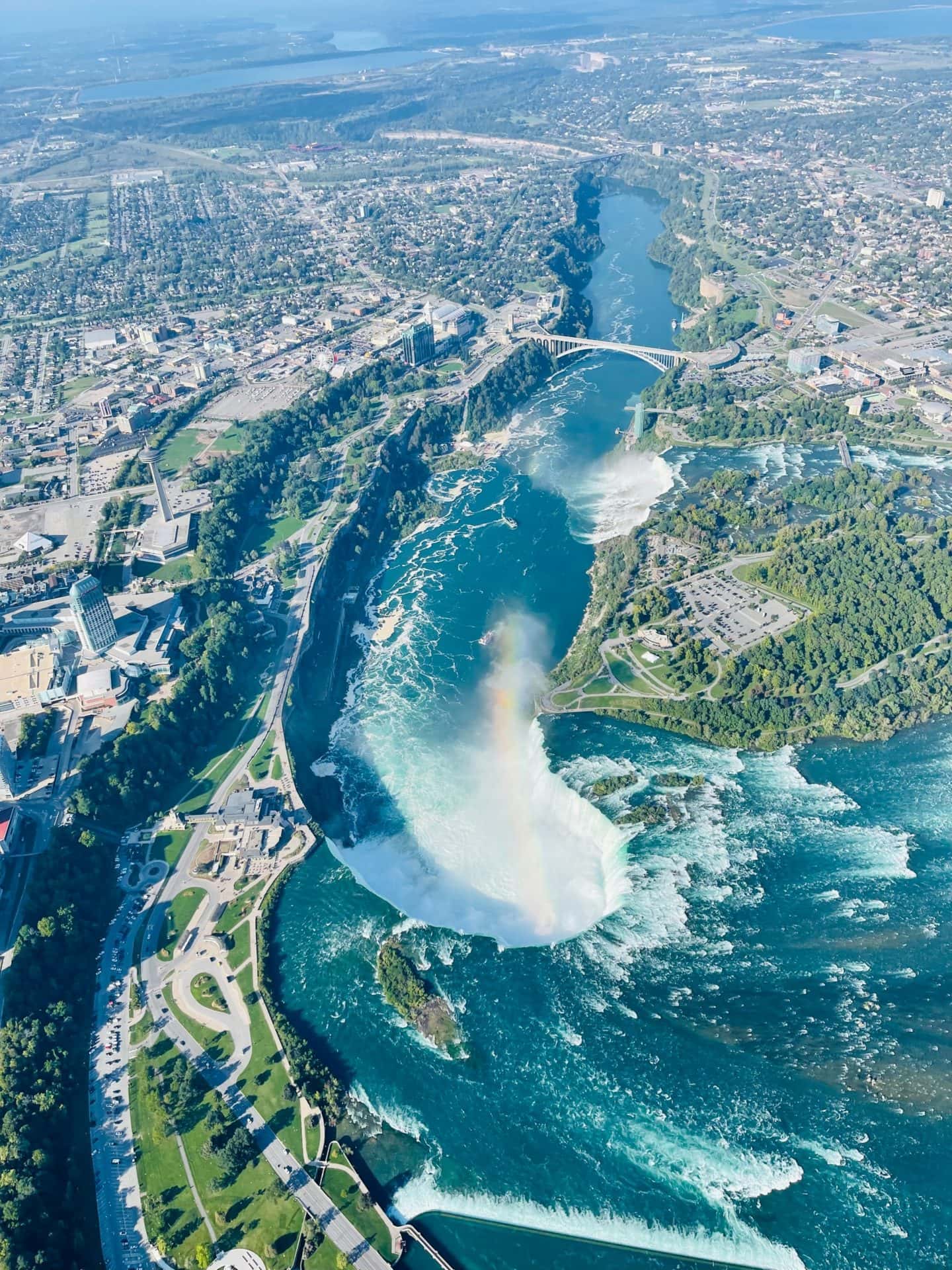
Niagara Falls is (slowly) eroding
Not surprisingly based on its geologic history, Niagara Falls is eroding at a rate of one foot/year. It’s estimated that during the next 50,000 years, the remaining 32 km to Lake Erie will be worn away and the falls will cease to exist.
Erosion is down from its historical average of 3 feet/year.
Niagara Falls is the largest waterfall (by volume) in North America
Niagara Falls tumbles over the edge at a rate of 375,000 gallons of water per second – the size of an Olympic-sized swimming pool! The height of the falls range from 167 feet and 188 feet tall.
While Niagara Falls isn’t the tallest waterfall in North America, the three waterfalls that make up Niagara Falls create the highest flow rate of any waterfall in the world.
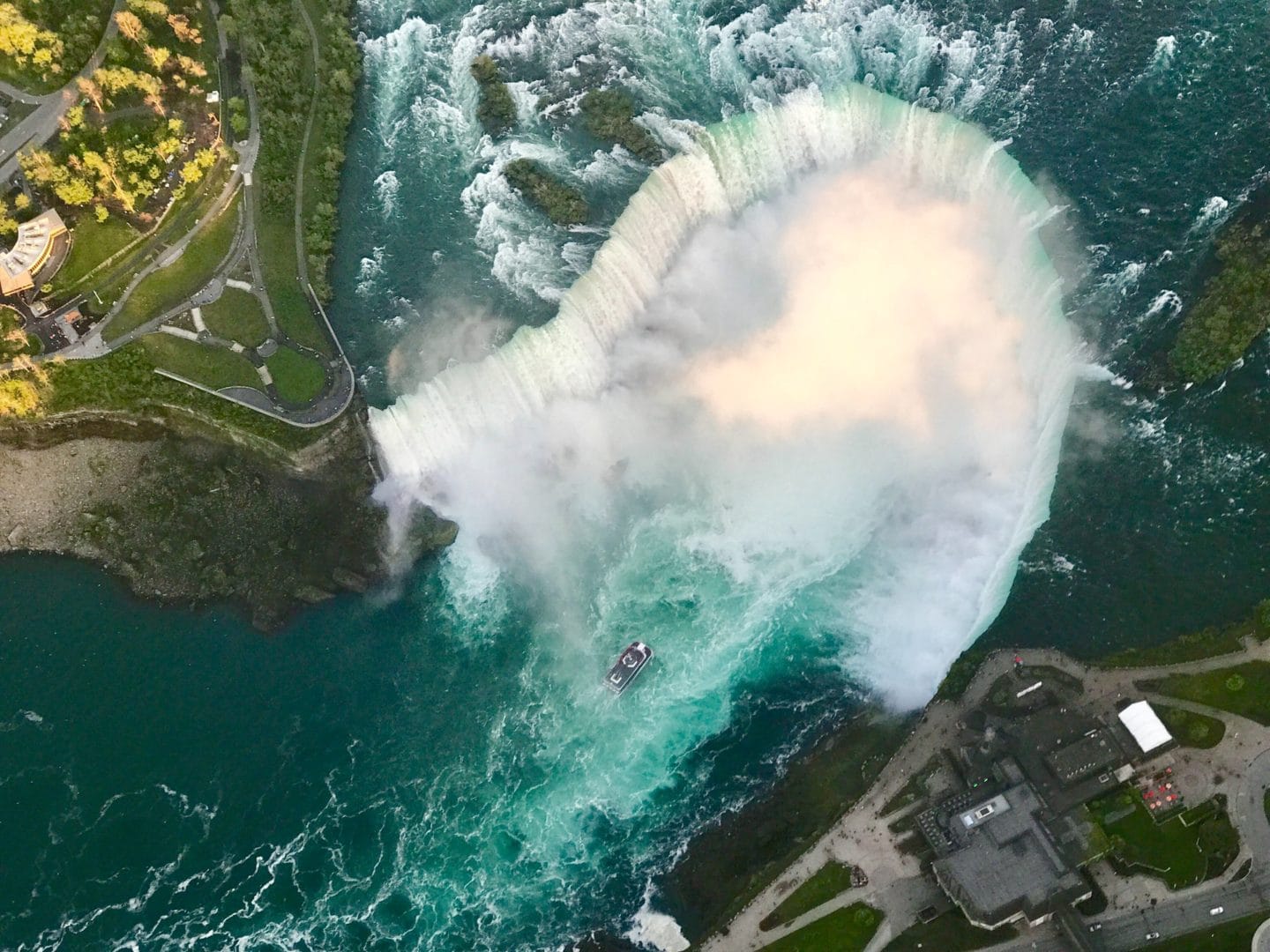
Niagara Falls Tourism Facts
We’re aware that Niagara Falls draws millions of tourists every year (over 13 million!), but did you know about these fun tourism facts?
The Maid of the Mist is the oldest tourist attraction in North America
The Maid of the Mist in Niagara Falls took its first voyage in 1846, making it the oldest tourist attraction in North America!
The Maid of the Mist started out as a ferry on the New York to Toronto route in 1846, but when a suspension bridge was built in 1848, the ferry wasn’t needed as much and was reborn as a sight-seeing tour.
Over the years the Maid of the Mist has welcomed celebrities, including Marilyn Monroe, Brad Pitt, and the Prince of Wales in 1860. It has also been a part of a rescue in 1960 when a seven year old boy fell over Niagara Falls (and survived).
There are tours that run on the Canadian side and on the US side of Niagara Falls, allowing you to get up close and personal to the magnificent falls!
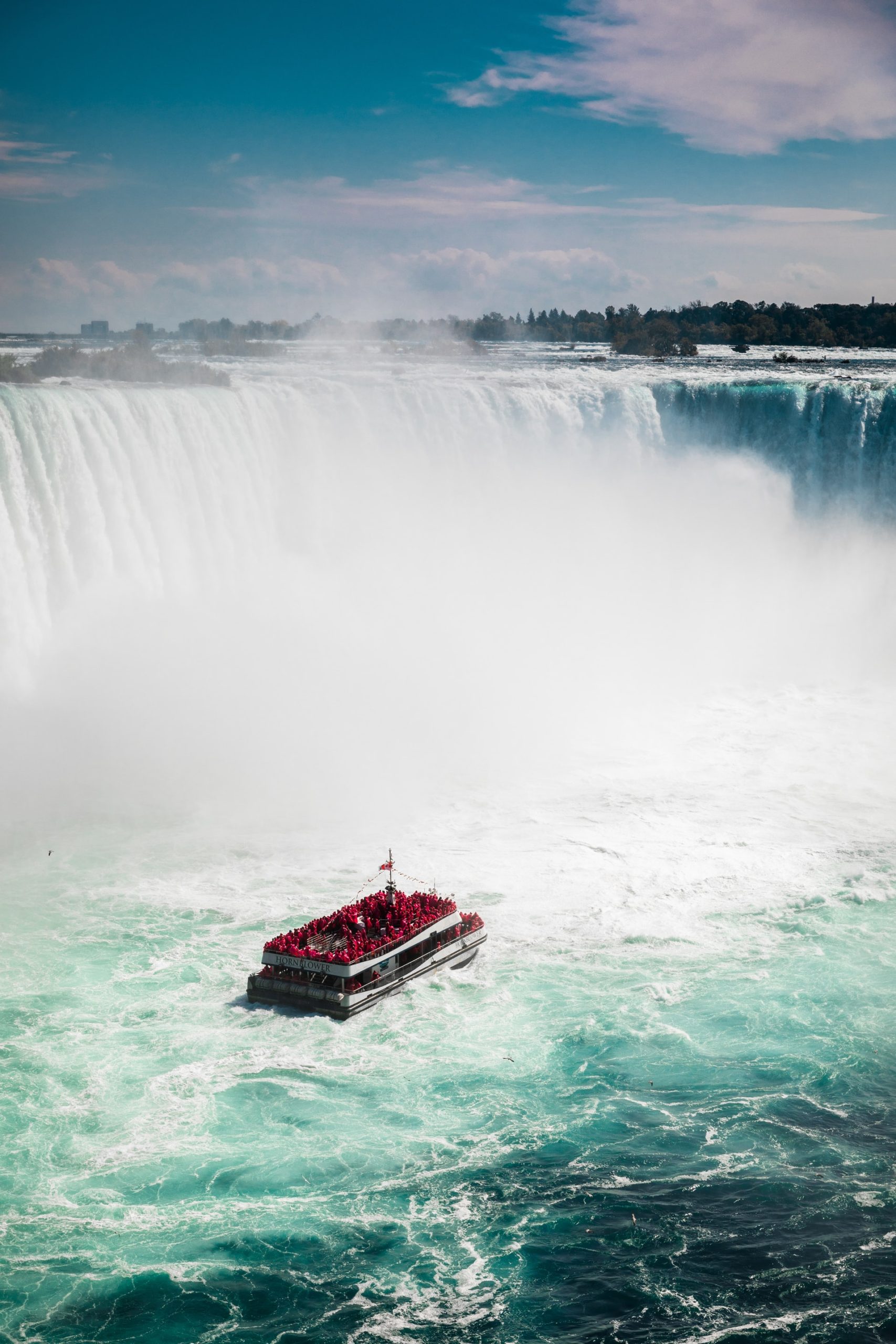
Niagara Falls has been featured in many films
Niagara Falls has been a huge tourist attraction and honeymoon destination for over 200 years, but after 1953, visits rose sharply after the movie ‘Niagara’ was released. It starred Marilyn Monroe and Joseph Cotten.
Niagara Falls has also been featured in Bruce Almighty (2003), Pirates of the Caribbean: At World’s End (2007), Superman II (1980), Tammy (2014), Sharknado 2: The Second One (2014) – just to name a few!
Niagara Falls is a Daredevil’s Paradise
Niagara Falls has attracted thrill-seekers and daredevils of all kinds over the years. Many have made successful attempts to cross the gorge (no thank you!). The first was Jean François Gravelet who crossed in 1859. That sparked a frenzy of others who wanted to attempt this same daunting challenge. Only one man fell to his death.
Charles Blondin performed numerous crossings of the gorge in Niagara Falls, and his crossings were quite a feat to watch with his different theatrical stunts. He would cross in a sack, trundling a wheelbarrow, on stilts, carrying a man on his back (would you volunteer for this?!), sitting down midway while he cooked and ate an omelette, or standing on a chair with only one of its legs balanced on the rope.
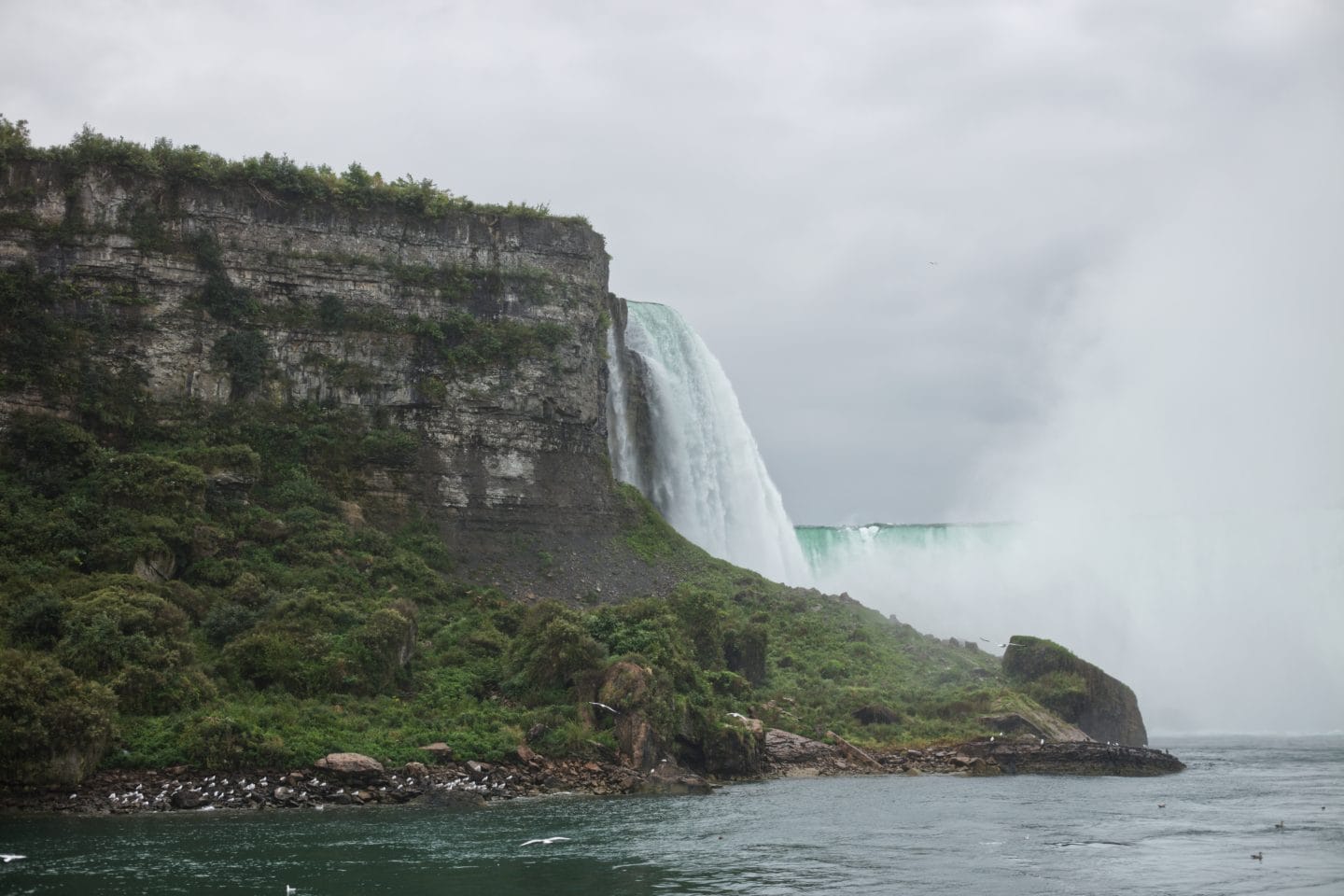
Maria Spelterini became the first woman to ever cross the Niagara Gorge on tightrope in 1876. She was only 23 at the time and made four crossings over 18 days – one while blindfolded.
Tightrope crossings ended in 1896, by law.
116 years later (as many of you may remember), Nik Wallenda crossed the brink of the Horseshoe Falls – which became the longest, unsupported tightrope walk in history. Funnily enough, he carried his passport with him and had to present it upon reaching the Canadian side of the falls.
There have also been many people to go over Niagara Falls in a barrel, including Annie Taylor, nicknamed the “Queen of the Mist” who travelled over the falls in a barrel in 1901. She was 63. It’s reported that 16 people have survived the feat of tumbling over Niagara Falls in homemade contraptions.
Niagara Falls is known as the honeymoon capital of the world
Newlyweds have been visiting Niagara Falls for well over 200 years, and plenty of high-society honeymooners, including Jerome Bonaparte (younger brother of Napoleon) have visited over the years.
Niagara Falls was first limited to the wealthy, but when the Erie Canal opened in 1825, the falls became accessible to middle-class newlyweds as well. Eventually, railways began bringing honeymooners on a daily basis to Niagara Falls!
Niagara Falls Electricity Facts
As you stand at the brink of the falls, you can feel the force of the water as it tumbles over the edge. Did you know about these Niagara Falls power generating facts?
Niagara Falls only flows at half its capacity
It might be hard to imagine, but Niagara Falls flows over 28 million litres of water – per second! That sounds like a lot, but now wrap your head around the fact that between 50-75% of the water flowing is diverted away from the falls for human consumption. The flow of the water is controlled by the International Control Structure; it’s diverted between New York Power Authority and Ontario Power Generation.
Between 9 pm and 8 am, the power plants draw water and reduce the rate of flow by 50%.
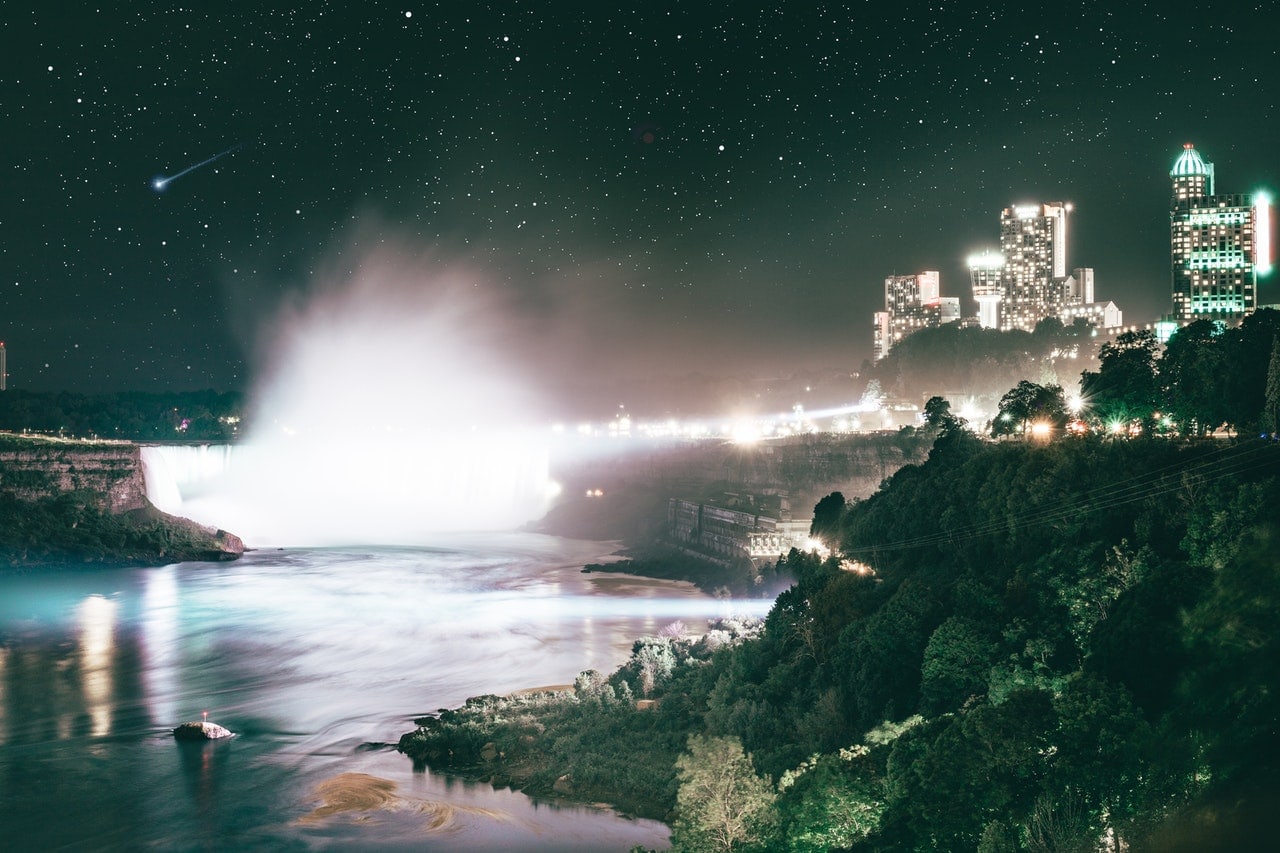
Less water is diverted during the summer to provide tourists and sightseers with a more impressive water flow over Niagara Falls.
Did you know: The highest flow ever recorded was at 225,000 cubic feet per second over the Horseshoe Falls!
It’s estimated that 90% of the waterflow over Niagara Falls is at the Horseshoe Falls.
The Niagara River flows at 35 miles an hour (56 km/hr). One of my favourite spots to see the Niagara River is at the Niagara Gorge trails. Take the metal staircase down and follow the Cliffside (orange) Trail to the River (blue) Trail.
History Facts about Niagara Falls
Niagara Falls is no stranger to history – did you know about these historic facts?
Where did the name Niagara come from?
One theory is the world Niagara comes from the Iroquoian word “onguiaahra” which means “a thundering noise.”
There are a few theories of where the word Niagara came from. The word Niagara comes from the word “onguiaahra” which means “the strait.” It’s thought to be derived from the waterway (the Niagara River) that flows from Lake Erie to Lake Ontario.
Others believe the world “onguiaahra” translates to “a thundering noise.”
Niagara Falls has its very own shipwreck!
Did you know Niagara Falls has its very own shipwreck? The Niagara Scow (also referred to as the Iron Scow or the Old Scow) has been perched along the Niagara River for over 100 years just a few hundred feet from the brink of the Horseshoe Falls!
The Niagara Scow was being towed when the rope broke free and sent the barge careening down the Niagara River. It was a near-tragic tale that quickly turned into a heroic rescue of two men.
The steel barge has moved a few times over the past century, including recently in April 2022, where it broke into several pieces.
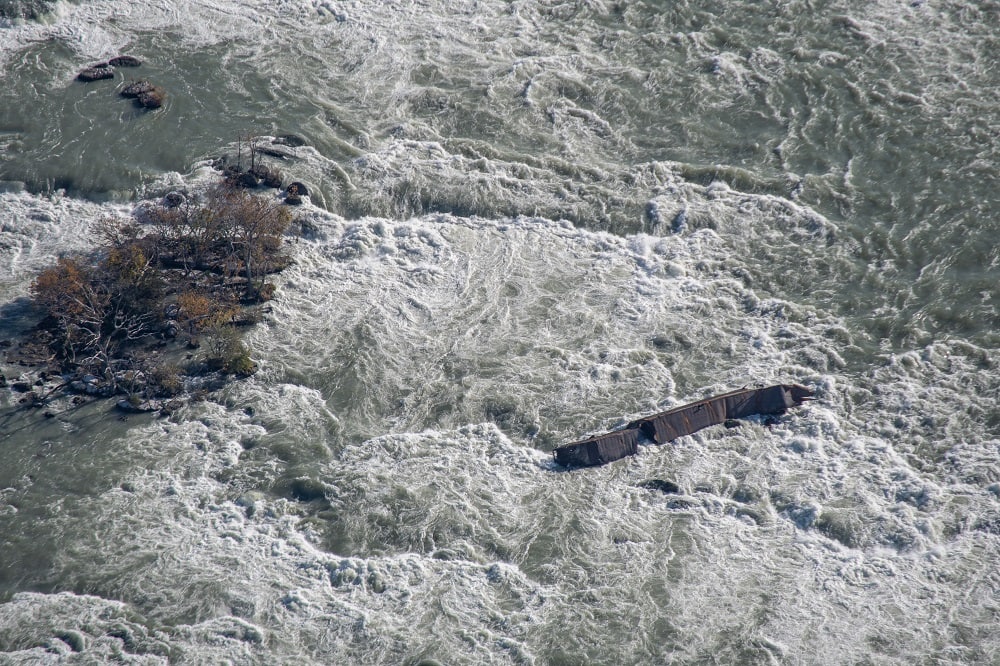
Photo: Wikimaker2018
Niagara Falls has stopped flowing – twice
It may be difficult to imagine the flow stopping at Niagara Falls, but it’s happened twice in our history!
In 1848, Niagara Falls stopped flowing when freezing conditions upstream of the Niagara River in Fort Erie caused the water to run dry. This lasted for 30 hours.
The American Falls at Niagara Falls was also “turned off” in June 1969 for five months so engineers and geologists could study the erosion of the bedrock. For three days, over 1200 dump trucks built a temporary dam to divert the water to the Horseshoe Falls.
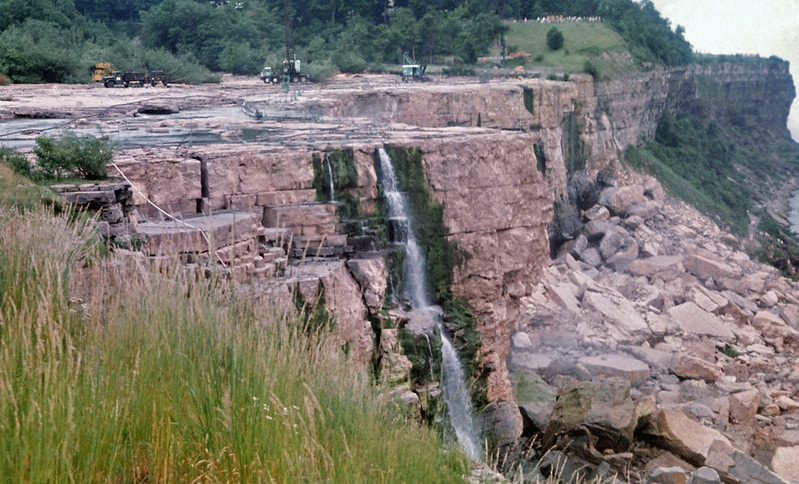
Niagara Falls is home to one of the bloodiest battles
During the War of 1812, one of the bloodiest battles happened on July 25, 1814 at Lundy’s Lane in Niagara Falls, and is one of the deadliest battles ever fought in Canada. You can visit the battleground at Drummond Hill Cemetery.
The Americans were pushing to gain control of the Niagara Peninsula with hopes of moving on to Toronto (previously referred to as York), Kingston and Montreal. This attempt was ultimately thwarted by the Battle of Lundy’s Lane – which marked the beginning of the end of the war.
The battle lasted for six grueling hours. In the end, there were over 1700 casualties including over 250 killed.
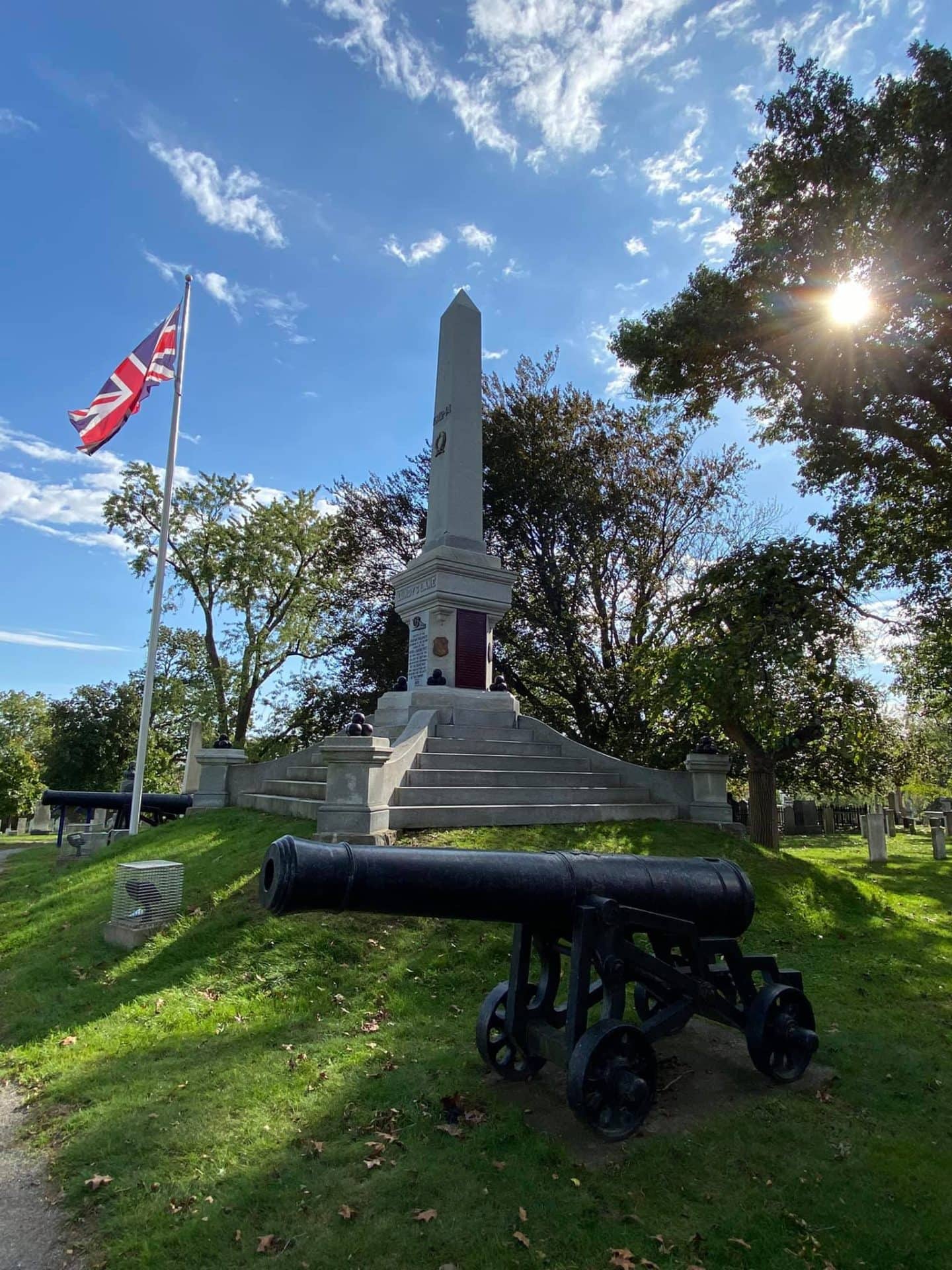
Related Posts
- The Best Free Things to do in Niagara Falls (from a local!)
- Interesting things to See at Queenston Heights
- All About the Niagara Shipwreck
- What to do in Niagara-on-the-Lake (that don’t include wineries!)
- The Best Beaches in Niagara to Visit this Summer
- Hidden Gems in Ontario You May Have Overlooked!
- Things to see and do in Port Colborne
- Niagara’s Best Ice Cream Parlours
- Common Road Trip Mistakes to Avoid (and what to do Instead!)
- Niagara’s Most Romantic Restaurants
Pin it for later!
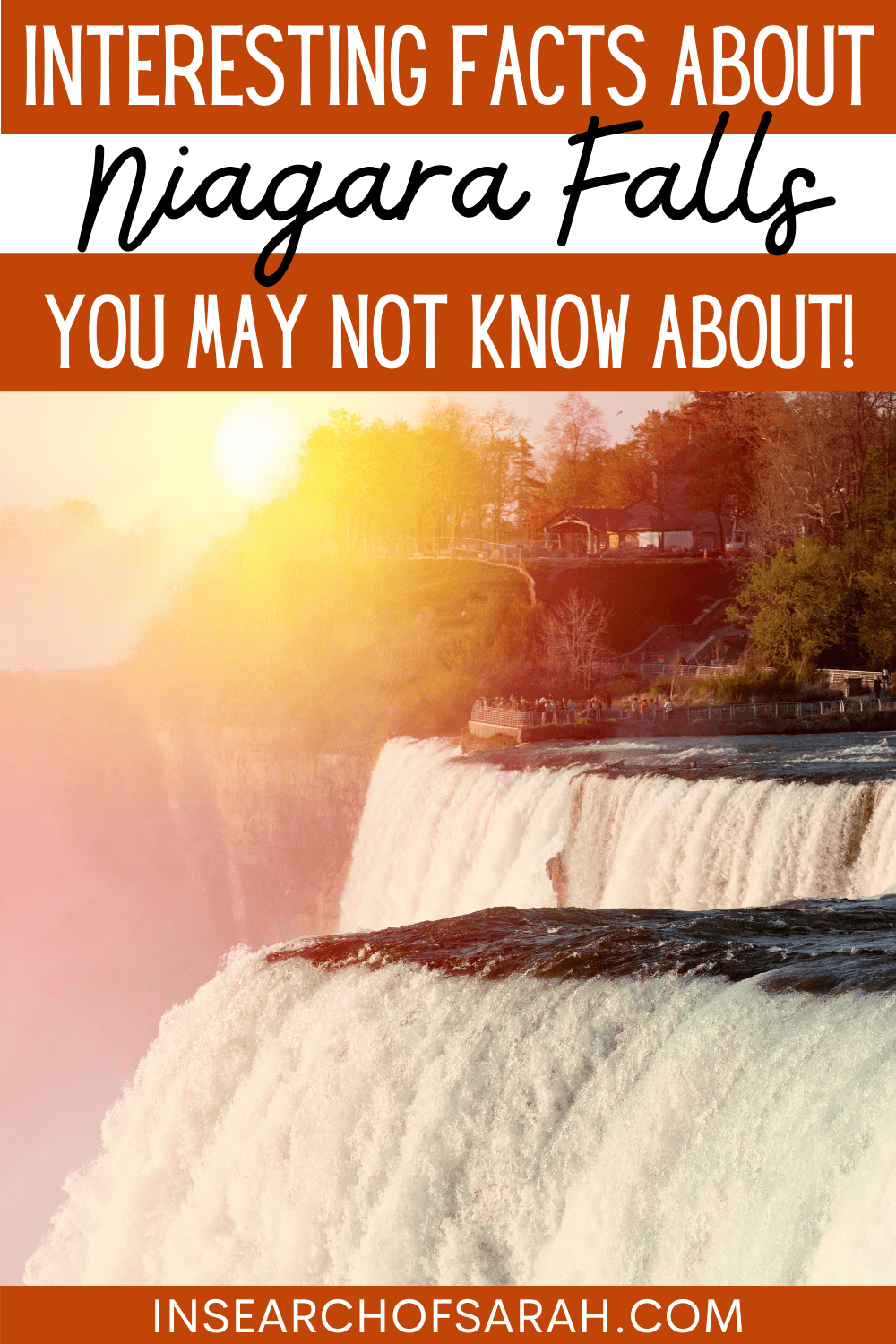
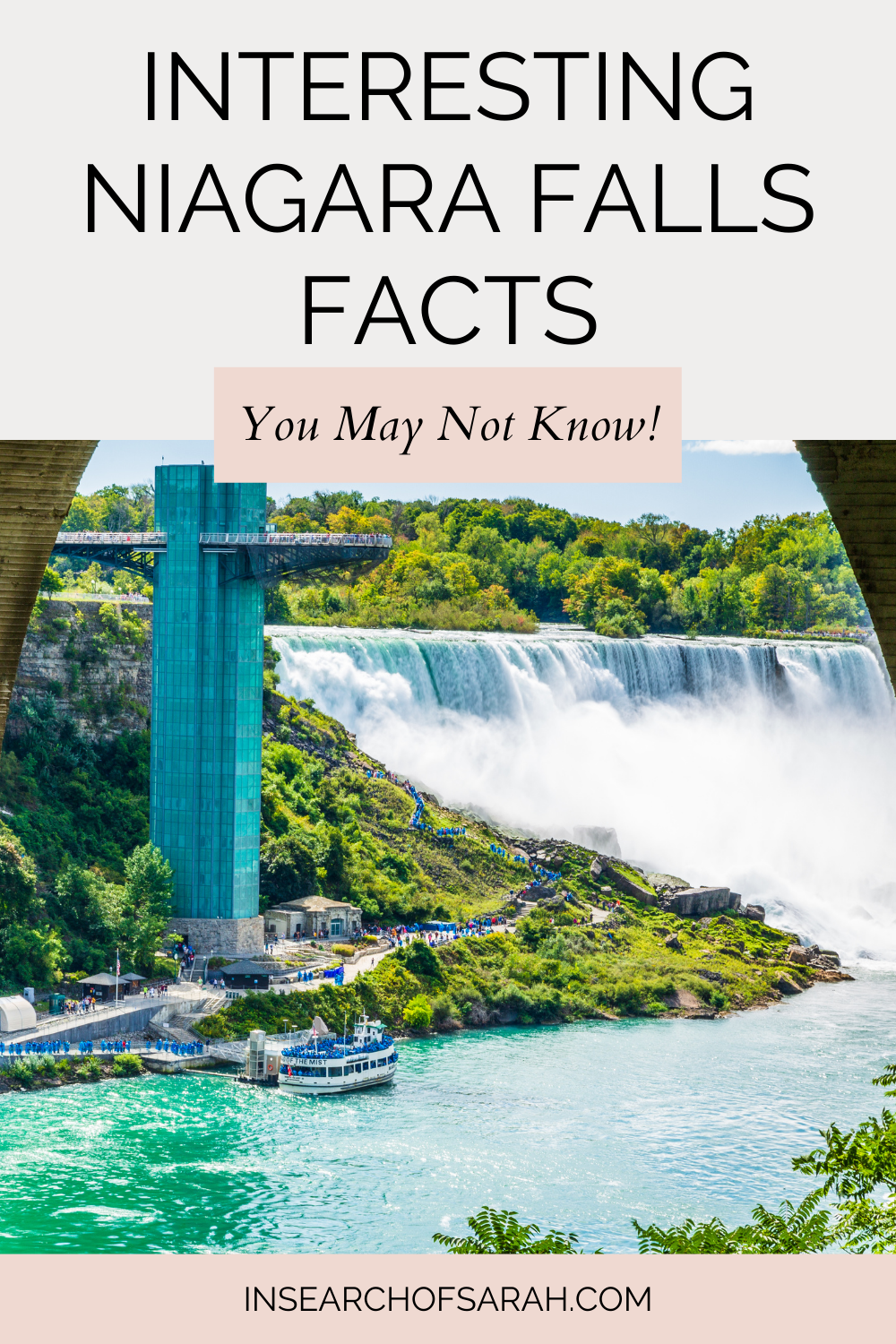

Thank you for sharing this interesting facts! I didn’t know any of this & your article was so interesing to read! Niagara Falls are so impressive, love it!
This is a chock full of information Sarah! I had no idea that one of the bloodiest engagements in the War of 1812 occurred at Niagara Falls. You really make me want to visit and see the Falls again.
The idea of the falls eroding is something new for me to think about. I haven’t been to the Falls but would love to visit and photograph this mighty sight.
Wow! I’ve been to Niagara Falls, but I didn’t know a good chunk of this. I had no idea there was a shipwreck! This really makes me want to go back and explore again.
These are such fun facts! I had no idea Niagara Falls was considered the honeymoon capital of the world. I guess I’ll have to convince my husband to go on an anniversary trip since we missed it on our honeymoon, haha. Thanks for sharing!